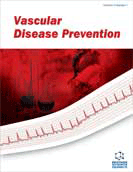
Abstract
Conventional scintigraphic myocardial perfusion imaging with SPECT and also more recently with PET has emerged as an important diagnostic modality to identify the presence of hemodynamically obstructive coronary artery disease (CAD), that carries important prognostic information. By assessing the relative myocardial distribution of the radiotracer uptake during treadmill exercise or pharmacologic-vasodilation and during rest, the presence of hemodynamically obstructive coronary lesions can be determined. Regional reductions in radiotracer uptake during stress identify the hemodynamic significance of obstructive coronary artery lesions, while the presence of non-obstructive CAD may be missed. Thus, while conventional perfusion imaging contributes to the non-invasive identification of more advanced and clinically manifest CAD, the concurrent ability of PET to assess regional myocardial blood flow (MBF) in quantitative estimates in ml/g/min enables the non-invasive detection of functional and/or structural alterations of early developing CAD. MBF estimates at rest, during pharmacologic vasomotor stress, or also during sympathetic stress with cold pressor testing (CPT), allow a comprehensive assessment of coronary vasomotor function. An impairment of coronary vasomotor function entails important predictive information for the development and progression of CAD and its atherothrombotic sequelae. Improvement or even normalization of coronary vasomotor function due to lifestyle-modification, effects of HMGCoA reductase inhibitors, ACE-inhibition, or glucose lowering therapy can be reliably monitored by PET measurements of MBFs. Whether an improvement in coronary vasomotor function, as monitored with PET, also mediates a reduced risk of developing future cardiovascular events deserves further clinical investigation.
Keywords: Blood flow, cold pressor test, coronary artery disease, coronary vasomotion, endothelium, myocardial perfusion, PET, SPECT



